From sea sparkles to fireflies : Chasing Australia’s ‘big four’
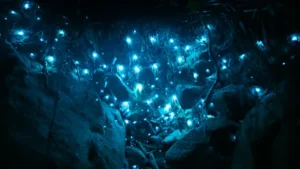
1. Sea Sparkles (Noctiluca scintillans) – Bioluminescent Plankton
-
Where: Jervis Bay (NSW), Tasmania, Gippsland Lakes (Victoria)
-
When: Warm months (Nov–May), after hot days and calm seas
-
What it is: A type of phytoplankton that emits blue light when disturbed (e.g., by waves, swimmers, or boats).
-
Experience: Walking along glowing shores at night or kayaking through glowing waves.
Science Behind It:
The plankton uses a chemical reaction (luciferin + oxygen) triggered by movement to produce light — likely for defense.
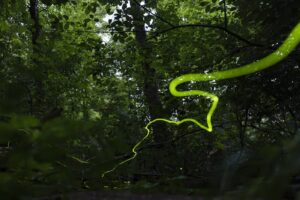
2. Glow Worms (Arachnocampa spp.) – Glowing Larvae
-
Where: Springbrook National Park (QLD), Tamborine Mountain, Blue Mountains (NSW)
-
When: All year, best on warm, damp nights
-
What it is: Larvae of a fly species that emit a bluish-green light to attract prey.
-
Experience: Entering dark caves or rainforests lit by thousands of tiny glowing dots — like a natural starry ceiling.
Science Behind It:
Glow worms use bioluminescence to lure insects into their sticky silk threads.
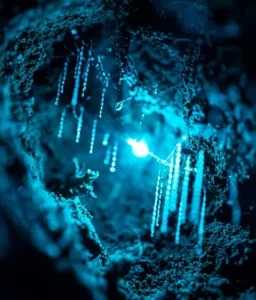
3. Fireflies (Lampyridae) – Flashing Beetles
-
Where: Mary River (NT), along rivers in QLD and NSW
-
When: Late spring to early summer (Oct–Dec), just after sunset
-
What it is: Flying beetles that flash in patterns to attract mates.
-
Experience: Magical light shows in wetlands, often in sync across groups.
Science Behind It:
Males and females communicate through flashing light signals using a light-producing enzyme called luciferase.
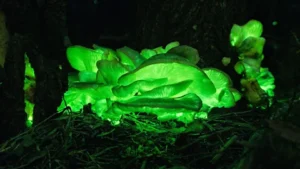
4. Fungi (Mycena chlorophos) – Ghost Mushrooms
-
Where: Glencoe Forest, South Australia; Victoria’s Otways; Tasmania
-
When: May–June (Autumn)
-
What it is: Bioluminescent mushrooms glowing green in darkness.
-
Experience: Trekking into a pitch-black forest to witness glowing mushrooms along fallen logs.
Science Behind It:
The glow comes from a metabolic reaction involving luciferin. The reason is still debated – possibly to attract insects for spore distribution.
Travel Tips
-
Bring: Headlamp with red light (to preserve night vision), insect repellent, sturdy shoes.
-
Best Time to Go: Different events occur at different times of the year – plan accordingly.
-
Respect Nature: No touching, no flashlights directly at the organisms, stay on trails.
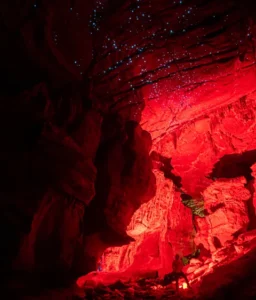
Why It Matters
Australia’s bioluminescent “Big Four” are:
-
Rare examples of natural light in the wild
-
Culturally and ecologically important
-
Increasingly vulnerable to climate change, pollution, and human disturbance

Summary Table
| Phenomenon | Location | Best Time | Color of Glow | Organism Type |
|---|---|---|---|---|
| Sea Sparkles | Jervis Bay, TAS, VIC | Nov–May | Blue | Plankton |
| Glow Worms | QLD, NSW (forests, caves) | Year-round | Blue-green | Larvae (Fly species) |
| Fireflies | NT, QLD rivers | Oct–Dec | Yellow-green | Beetles |
| Ghost Mushrooms | SA, VIC, TAS forests | May–June | Green | Fungi |

